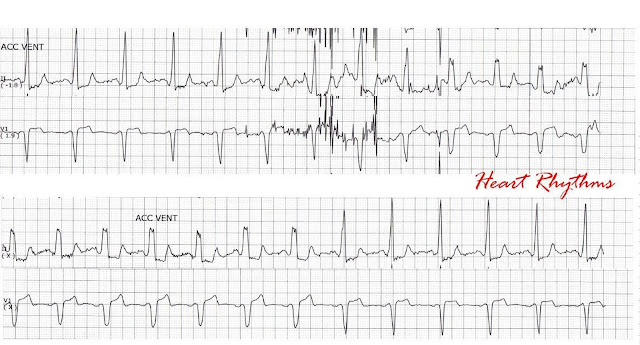An elderly with hypertension, dyslipidemia and COPD was admitted due to slurred speech.
Figure 1
What is your interpretation?
The baseline rhythm is SR ~ 71 bpm with normal PRI and normal QRS duration. As the rate increases (~ 75 bpm), there is a left bundle branch block (LBBB) morphology. On the bottom strip, there is normalization of QRS duration as the rate goes down.
So, this is rate-related LBBB.
Acceleration-dependent aberrancy
At a critical heart rate, impaired ventricular conduction results in aberrancy.
- it usually displays LBBB
- often occurs at lower heart rates (< 75 bpm)
- is independent of abrupt change in cycle length
- often appearing with gradual acceleration and frequently with a small, 0.5 ms or shorter, change of the cycle length
- after an acceleration of the rate, it may appear only after a number of cycles,all the cycles equal in duration
- rarely disappears with acceleration of the heart rate
- nearly always a marker of cardiac abnormality
Due to the small changes in cycle length, longer documentation (longer strips) is needed for a diagnosis of acceleration dependent aberration.
Four manifestations of acceleration dependent
aberration are of particular interest. These include:
- the slow heart rate at which aberration may appear
- the inverse relation of the duration of the refractory period to the basic cycle length,
- normalisation of intraventricular conduction at cycles longer than the "critical cycle," the latter defined as the cycle at which aberration first appears,
- after acceleration of the rate and without change in cycle length, aberration may appear only after a number of cycles
For the case
These changes were only observed during heart rate changes and patient is asymptomatic. Further work up of the initial complaint revealed ischemic CVA. Managaed based on protocol and patient was discharged after a few days.
References:
#267

No comments:
Post a Comment
Note: Only a member of this blog may post a comment.